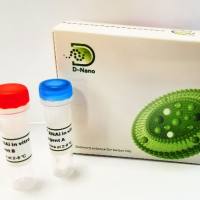Human Intrahepatic Biliary Epithelial Cell Lineages: Studies In Vitro
互联网
234
The human intrahepatic biliary epithelium is composed of a morphologically heterogeneous population of epithelial cells. During liver cirrhosis, new biliary ductular structures develop at the portal margins that express markers of immaturity such as CD56 and Bcl-2. These markers are also expressed transiently on immature biliary duct precursors during embryological development; thus their reappearance during cirrhosis suggests a recapitulation of ontogenesis during some liver conditions. Here we describe methods, based on the differential expression of membrane markers, for separating immature biliary epithelial cells from those associated with mature ducts. We also describe two- and three-dimensional culture models for the maintenance of mature and immature populations in vitro. Both populations readily establish colonies in monolayer culture but only cells from mature ducts can be maintained in medium-term culture as serially proliferating, passageable cultures; immature cells deteriorate and detach within 2–3 weeks of isolation. In three-dimensional collagen gel culture, both mature and immature populations form duct-like structures with clearly definable lumena that persist for up to 6 weeks.









